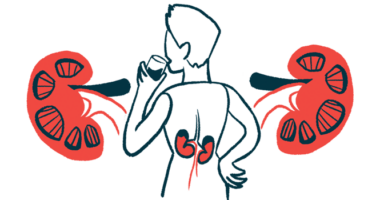Transplant Medication CellCept Effectively Treats aHUS in 10-year-old Girl
2 years of CellCept treatment led to resolution of girl's symptoms

CellCept (mycophenolate mofetil), an oral immunosuppressant used to prevent organ rejection, was effective in the treatment of a 10-year-old girl with severe atypical hemolytic uremic syndrome (aHUS).
Researchers highlighted the importance of early diagnosis and careful monitoring in patient recovery.
The study, “Atypical hemolytic uremic syndrome (aHUS) responsive to mycophenolate mofetil: a case report from Nepal,” was published in the journal Annals of Medicine and Surgery.
aHUS can lead to kidney damage and failure
aHUS is a type of thrombotic microangiopathy (TMA), a group of diseases characterized by the formation of blood clots in small blood vessels.
The disease is caused by the abnormal activity of the complement cascade, a part of the immune system. This leads to increased inflammation and blood clotting in small blood vessels of several organs, particularly the kidneys. Over time, these clots can result in kidney damage and, eventually, kidney failure.
In some cases, aHUS is caused by autoantibodies that block the activity of complement-regulating proteins, ultimately resulting in uncontrolled complement activation.
Diagnosis of aHUS mainly involves differentiating it from other types of TMA. This includes genetic testing to identify mutations in complement-regulating genes that may increase one’s susceptibility to developing aHUS.
A team of researchers in Nepal reported the case of a 10-year-old girl with a severe form of aHUS, who recovered after long-term treatment with steroids and CellCept, an immunosuppressive agent.
At hospital admission, the girl presented with fever, puffy eyes, low urine output, and abdominal pain.
Blood tests showed she had anemia and low platelet counts, while liver function tests revealed increased levels of liver enzymes, indicating liver damage and inflammation. Urine tests showed the presence of blood and protein, both signs of kidney damage.
Further testing revealed she had high levels of complement C3 — a protein that is part of the complement system — at 142 mg/dL (normal range: 75–135mg/dl).
This case proves that early diagnosis along with prompt treatment and close monitoring will lead to recovery from aHUS
Girl initially diagnosed with autoimmune hemolytic anemia
Based on these test results, the girl was initially diagnosed with autoimmune hemolytic anemia, a rare condition in which the body’s immune system mistakenly attacks red blood cells.
She received a platelet-rich plasma transfusion and steroids. Bone marrow aspiration revealed normal blood cell production.
One month later, her blood and urine tests came back normal, and the girl was discharged home.
At the age of 7, the girl was admitted again with fever, low urine output, headache, vomiting, and puffy eyes. Her urine was brown, suggesting the presence of blood which was confirmed with more urine tests.
Blood tests showed low levels of platelets and hemoglobin — the oxygen-carrying protein in red blood cells — at 7.4 g/dL (normal range for her age is 10–15.5 g/dL.
Blood levels of creatinine rapidly increased (from 1.8 to 4.8mg/dL), indicating acute kidney injury.
Additional blood tests showed she had normal complement C3 levels, but increased levels of urea (276 mg/dL; normal range for her age is 7–20 mg/dL) and liver enzymes. She also had high blood pressure.
She started treatment with the steroid methylprednisolone and cyclophosphamide, an immunosuppressive agent, as she was likely to develop rapidly progressive glomerulonephritis, a kidney syndrome characterized by a rapid loss of kidney function.
At the hospital, she had a seizure episode, followed by blurred vision and eye damage.
A kidney ultrasound found signs of tissue damage and a kidney biopsy showed signs of TMA.
Given these results, the girl was diagnosed with aHUS. However, genetic testing revealed she carried no aHUS-predisposing mutations. Additionally, no autoantibodies targeting complement-regulating proteins were found.
She started treatment to lower her blood pressure, and to control seizures and inflammation. Her health started improving after a month in the hospital.
After her kidney function returned to normal, she discontinued these treatments and was kept under close observation.
Symptoms resolve after 2 years on CellCept
On follow-up, the girl showed no blood in her urine and her medical team decided to start her on oral CellCept. A previous study reported that 60%–70% of patients treated with immunosuppressive medications like CellCept survived without needing dialysis.
In this case report, “immunosuppression with mycophenolate mofetil for two years led to clinical improvement in the child,” the team wrote.
This included improvements in blood pressure, eye symptoms, seizures, kidney function, and blood parameters.
As such, steroids and blood pressure treatments were stopped, but CellCept was maintained. The girl continued to improve, suggesting she was in remission.
After two years on CellCept, the girl discontinued treatment. She is currently not taking any medication, and her symptoms have fully resolved.
“This case proves that early diagnosis along with prompt treatment and close monitoring will lead to recovery from aHUS,” the researchers wrote.








